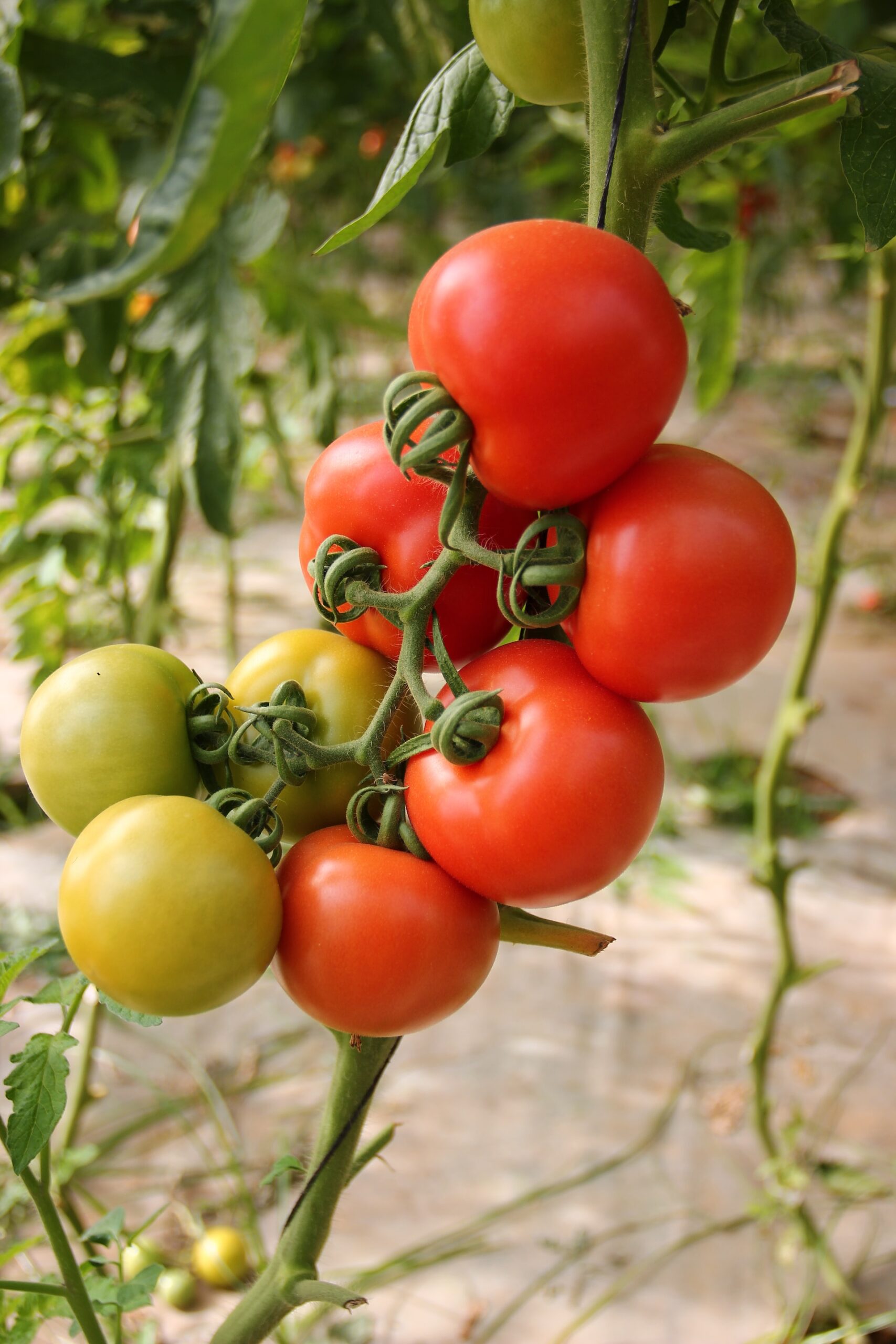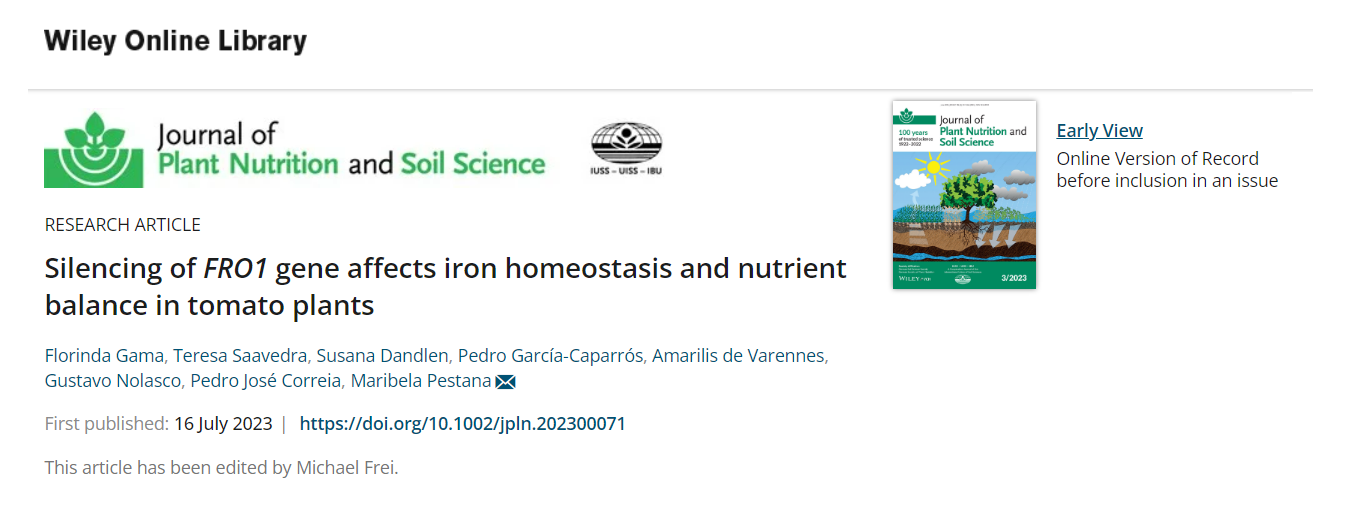

TITLE
Silencing of FRO1 gene affects iron homeostasis and nutrient balance in tomato plants
JOURNAL
Journal of Plant Nutrition and Soil Science
AUTHORS
Florinda Gama, Teresa Saavedra, Susana Dandlen, Pedro García-Caparrós, Amarilis de Varennes, Gustavo Nolasco, Pedro José Correia, Maribela Pestana
ABSTRACT
Iron chlorosis is an abiotic stress of worldwide importance affecting several agronomic crops. It is important to understand how plants maintain nutrient homeostasis under Fe deficiency and recovery. We used the virus‐induced gene silencing (VIGS) method to elucidate the role of the FRO1 gene in tomato plants and identify the impact on regulation of the root ferric‐chelate reductase (FCR) activity and nutritional homeostasis. Tomato plantlets cv. “Cherry” were transferred into half‐strength Hoagland’s nutrient solution containing 0.5 µM of Fe (Fe0.5). In phase I, two treatments were established: control (Fe0.5) plants and VIGS‐0.5 plants corresponding to plants with the FRO1 gene silenced. In phase II, plants from Fe0.5 and VIGS‐0.5 were transferred to new nutrient solution and then grown for a further 14 days under 0 and 10 µM of Fe (as 0.5 µM would not be enough for the larger plants during phase II). Therefore, four treatments were imposed: Fe0, Fe10, VIGS‐0, and VIGS‐10. VIGS‐0.5 plants had significantly lower chlorophyll (Chl) and root FCR activity compared to the respective non‐silenced plants and retained more Cu and Zn in the roots at the expense of stems (Cu) or young leaves (Zn). Iron concentration in roots and stems decreased in FRO1 gene‐silenced plants, compared to control plants, but the allocation to different organs was similar in both treatments. There was a partial recovery of leaf Chl in the VIGS‐10 plants and a higher concentration of Fe in all organs. In contrast, the allocation of Cu to roots decreased in the VIGS‐10 plants.



